by Larry Jordan
on August 12, 2014
 To quote Eric Deggans from his NPR piece this morning:
To quote Eric Deggans from his NPR piece this morning:
“For many years, Robin Williams seemed like a talent who had no off switch. From his standup comedy work to TV roles to talk show appearances to Oscar-caliber movies and performances on Broadway, Williams was a dervish of comedy — tossing off one-liners, biting asides and sidesplitting routines in a blizzard of accents, attitudes and goodhearted energy.” You can read the full piece here.
I, among many, will miss him dearly.
His brilliance is unmatched.
{ }
by Larry Jordan
on July 30, 2014
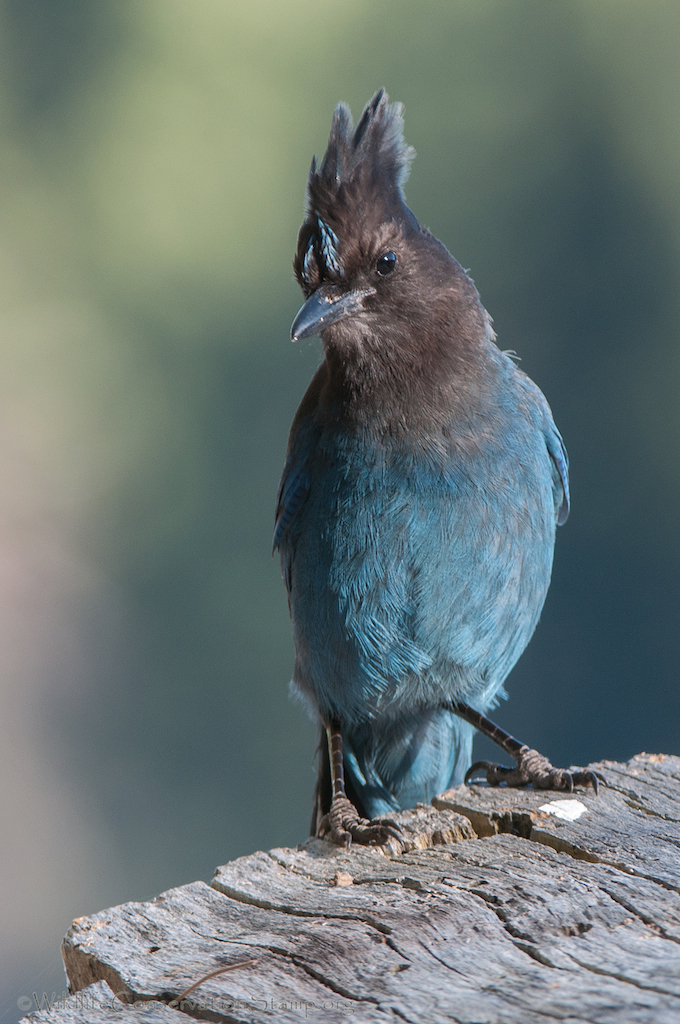 Steller’s Jay (Cyanocitta stelleri) photo by Larry Jordan
Steller’s Jay (Cyanocitta stelleri) photo by Larry Jordan
Check out my latest West Coast Beat Writer post on the Steller’s Jay (Cyanocitta stelleri) seen at Lassen Volcanic National Park.
{ }
by Larry Jordan
on July 23, 2014
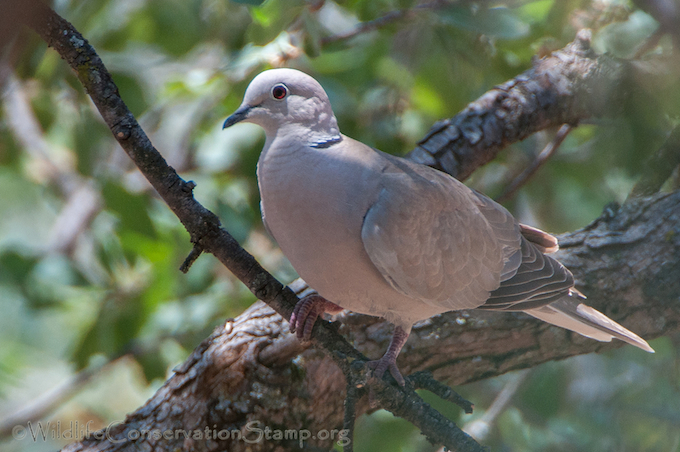 Eurasian Collared-Dove (Streptopelia decaocto) photo by Larry Jordan
Eurasian Collared-Dove (Streptopelia decaocto) photo by Larry Jordan
Invasive species week is happening at 10000 Birds! Make sure to check out my latest post on the Eurasian Collared-Dove and see how quickly this species is spreading across North America.
{ }
by Larry Jordan
on July 13, 2014
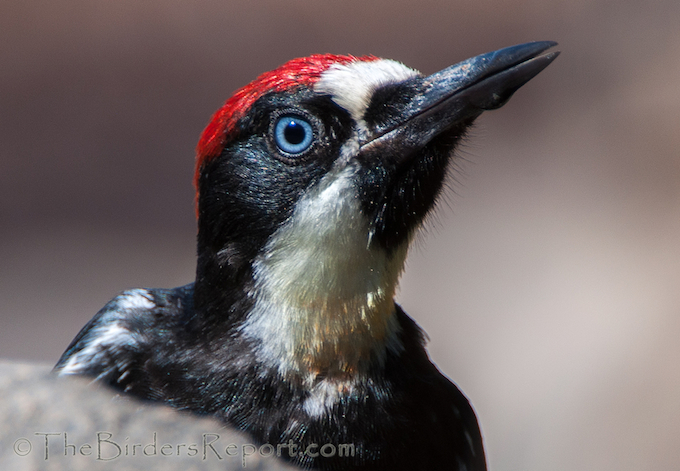 Acorn Woodpecker Juvenile (Melanerpes formicivorus) photo by Larry Jordan
Acorn Woodpecker Juvenile (Melanerpes formicivorus) photo by Larry Jordan
Acorn Woodpeckers (Melanerpes formicivorus) nest on my property here in Northern California. They are conspicuous, gregarious and a joy to watch. Click on photos for full sized images.
This woodpecker is a cooperative breeder and lives in family groups of up to a dozen or more individuals. This is an adult male sticking his head out of a natural cavity in a Gray Pine snag. Note the eye color.
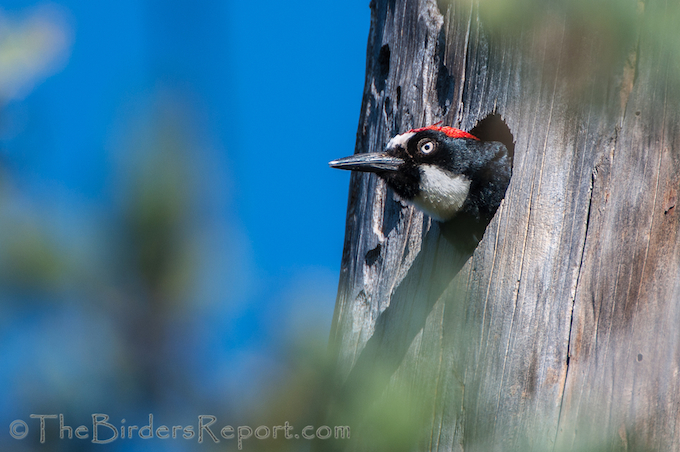
These family groups forage together and the adults always bring their young to my feeding station and water feature to teach them the finer details of what it is to be an Acorn Woodpecker. This is their typical call.
The young Acorn Woodpecker, like this youngster approaching the water feature for a drink, begins its life with dark irises.
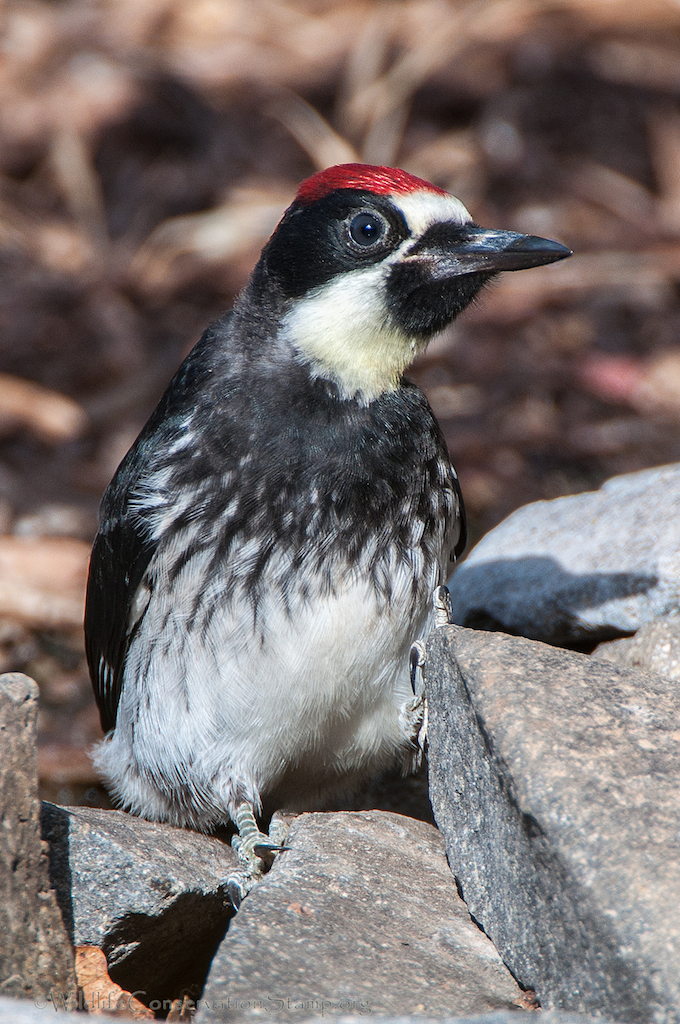
He’s not sure of what he is doing but their are several adults nearby watching him and calling to him.
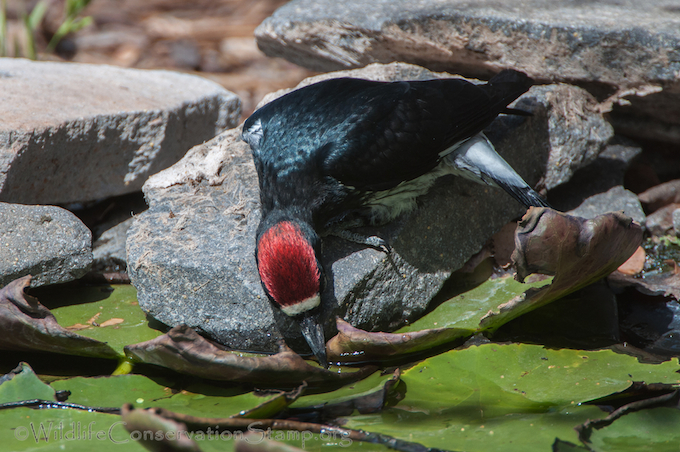
The juvenile’s scarlet crown extends from its nape to its white forehead patch, similar to the adult male’s.
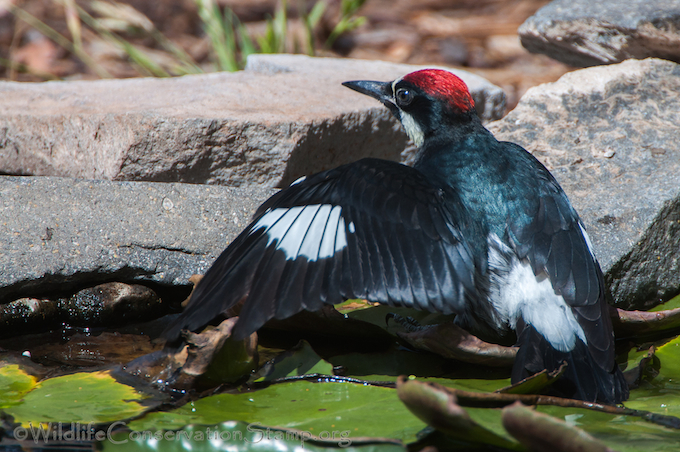
Here you can see the white upper tail coverts and conspicuous wing patches that are most obvious during flight.
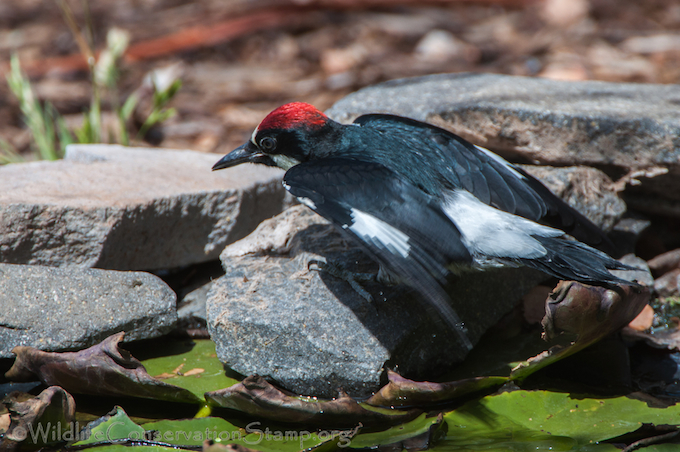
The dark eyes of the young fledgling quickly lighten to the sky blue seen in the top photograph and by the end of the its prebasic molt (2 to 4 months post fledging) the irises are pale yellow to white like the adult’s.
These photos of the dark eyed bird were taken just three weeks before the top photo, which I believe is the same individual juvenile bird.
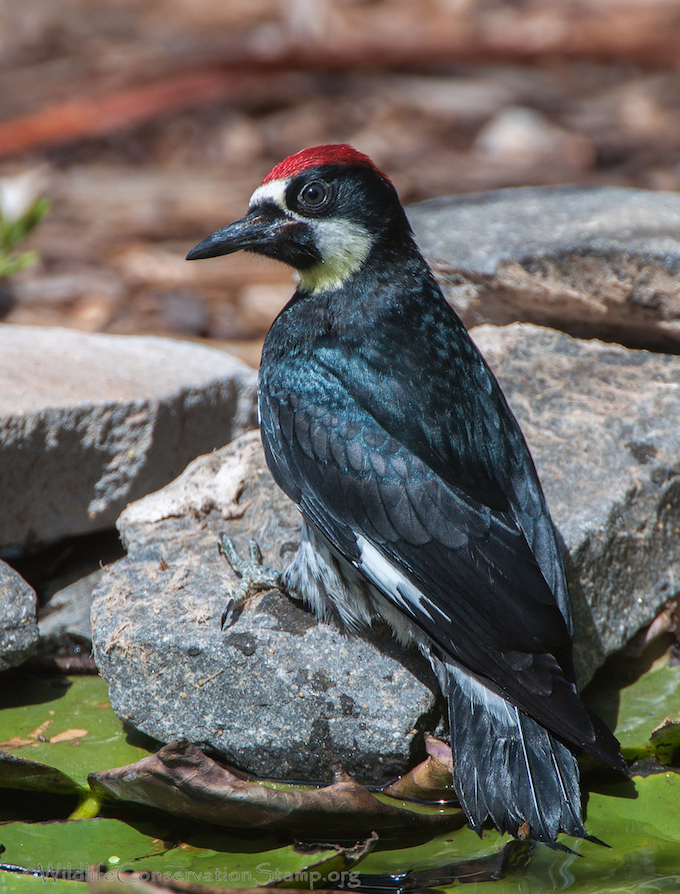
It’s quite the transformation don’t you think?
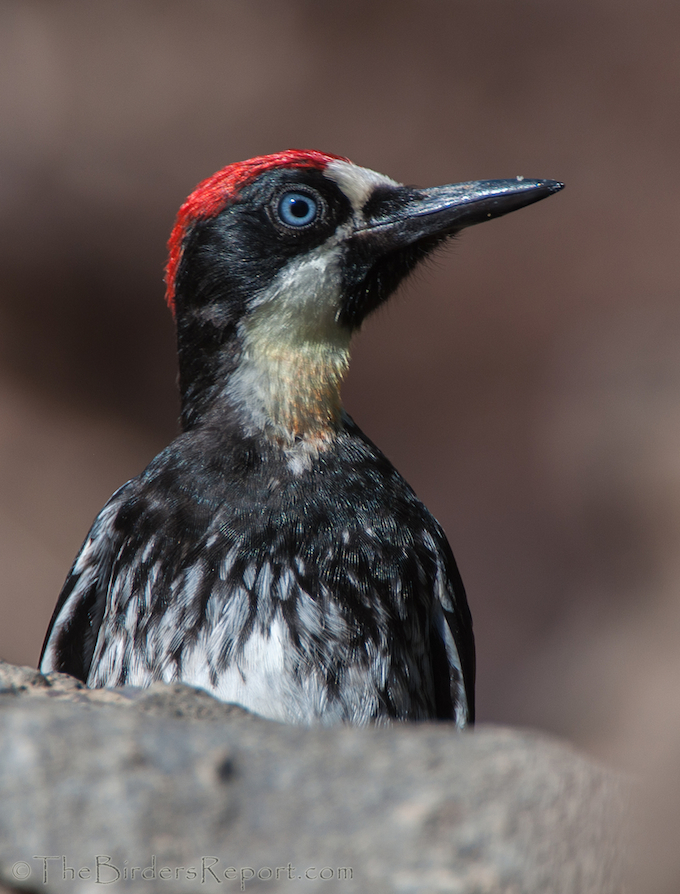
This is a video I took a few years ago of several Acorn Woodpeckers clowning around at my feeding station.
Also check out the great video by National Geographic on the Acorn Woodpecker and their nut stashing at the top right of the page.
{ }
 To quote Eric Deggans from his NPR piece this morning:
To quote Eric Deggans from his NPR piece this morning:













Social Media Connect